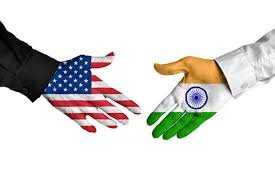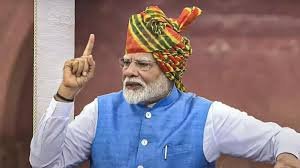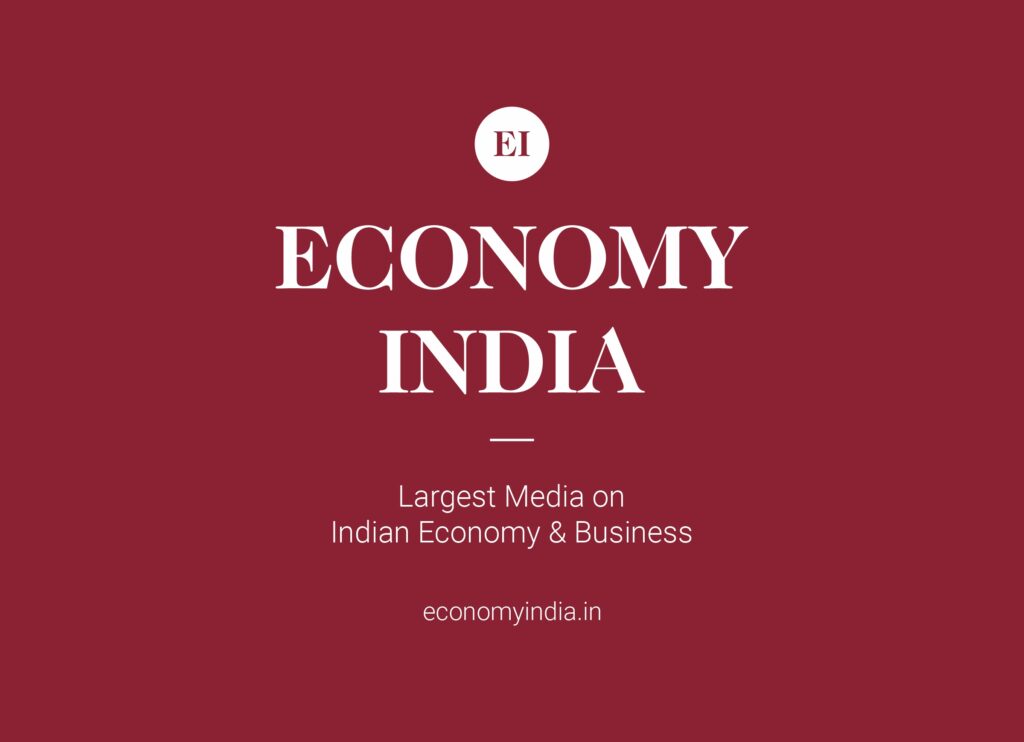NEW DELHI (Economy India): India reiterated its strong commitment to a WTO-centric, fair, and transparent multilateral trading system during the Shanghai Cooperation Organisation (SCO) Trade Ministers’ Meeting in Vladivostok, Russia. Represented by Shri Amitabh Kumar, Additional Secretary, Department of Commerce, India underscored the need to strengthen resilient supply chains, promote inclusive growth, and expand digital and creative economy partnerships among SCO member states.
The SCO, representing nearly 42% of the world’s population and 17.2% of global trade, provides a vast platform to reshape economic cooperation in Eurasia. India’s intervention was both assertive and constructive: it called for WTO reforms, cautioned against weaponizing trade restrictions, and showcased India’s digital public infrastructure (DPI) achievements such as UPI, India Stack, and ONDC as replicable global models.
This long-form feature by Economy India examines the highlights of India’s participation, the broader trade context, and what it means for regional cooperation, digital commerce, climate-linked trade, and India’s emerging AVGC (Animation, Visual Effects, Gaming, and Comics) industry.

India’s Core Message: WTO-Centric and Inclusive Multilateralism
India’s central message at Vladivostok was clear: the multilateral trading system must remain anchored in the WTO. Amitabh Kumar emphasized that only a non-discriminatory, rule-based, and development-oriented WTO can ensure a level playing field for both developed and developing nations.
Key Demands at WTO Reform
India listed several priorities that resonate with the Global South:
- Permanent Solution for Public Stockholding (PSH): India pressed for a credible outcome that allows developing countries to maintain food security reserves without breaching WTO subsidy limits.
- Special & Differential Treatment (S&DT): India highlighted that flexibility for developing economies remains essential to ensure equitable growth.
- Dispute Settlement System Restoration: India called for reviving the two-tier dispute resolution mechanism, currently paralyzed due to the Appellate Body crisis.
- Services Trade & Mobility: India emphasized the importance of easing temporary movement of skilled professionals, an area where it has a comparative advantage.
By doing so, India positioned itself as a bridge between advanced and developing economies, pushing for reforms that combine predictability with fairness.

SCO Trade Landscape: Why It Matters
The SCO, founded in 2001, has gradually expanded from a security-oriented grouping into a broad-based economic and cultural forum. Today, it includes China, Russia, India, Pakistan, Kazakhstan, Kyrgyzstan, Tajikistan, Uzbekistan, and Iran (with other observer and dialogue partners).
- Population Base: Over 3.2 billion people (42% of humanity).
- Trade Share: Accounts for nearly one-fifth of world trade.
- Strategic Geography: Connecting Eurasia’s landlocked economies to global markets.
For India, the SCO provides both opportunities and challenges:
- Opportunities: Access to Central Asian energy markets, export diversification, digital trade collaborations, and creative industries outreach.
- Challenges: China’s dominance, Russia’s shifting trade priorities due to Western sanctions, and India-Pakistan geopolitical friction.
By reaffirming WTO principles, India attempted to balance its regional aspirations with global trade governance frameworks.
Supply Chain Diversification: India’s Strategic Focus
In a world rattled by geopolitical tensions, pandemics, and climate shocks, India strongly argued for supply chain resilience.
India’s Position
- Geographic Expansion: Build multiple sourcing and production hubs across SCO.
- Interoperable Logistics: Harmonize standards and digital systems for seamless cross-border trade.
- Predictable Market Access: Avoid arbitrary export restrictions that disrupt trust.
- Connectivity: Improve transport corridors linking India to Central Asia and Russia.
India cautioned that export restrictions must not be used as weapons to create artificial shortages or to manipulate markets. Instead, transparency and trust should guide trade flows.
Digital Public Infrastructure: India’s Showpiece at SCO
One of the most significant parts of India’s intervention was its demonstration of DPI (Digital Public Infrastructure). Over the last decade, India has built globally scalable models that combine inclusivity, cost-efficiency, and innovation.
DPI Examples India Showcased
- UPI (Unified Payments Interface): Real-time, low-cost digital payments now processing billions of transactions monthly.
- India Stack: A digital identity and consent management framework that underpins Aadhaar-linked services.
- ONDC (Open Network for Digital Commerce): A neutral, open protocol to democratize e-commerce, reducing MSME dependency on big tech platforms.
India projected these as replicable models for SCO nations, especially for MSMEs struggling with digital adoption.
“These platforms reduce costs, expand market access, and enable real-time cross-border settlements. They are not only Indian innovations but also global public goods,” Kumar said.
By proposing secure, transparent, and innovation-driven e-commerce frameworks, India sought to anchor itself as a digital diplomacy leader.
Climate and Trade: India’s Balancing Act
Another highlight of India’s statement was its critique of arbitrary climate-linked trade barriers.
India’s Climate Trade Position
- Equity Principle: Climate measures must respect Common But Differentiated Responsibilities and Respective Capabilities (CBDR-RC).
- Mission LiFE: India showcased its Lifestyle for Environment initiative, urging behavioral changes for sustainability.
- Finance & Technology Transfer: India stressed that climate action cannot succeed without affordable finance and technology.
- Trade Concerns: Warned against climate tariffs or carbon border adjustment mechanisms that could unfairly penalize developing economies.
India’s position reflects a growing South-South consensus that climate policy should not become a new form of trade protectionism.
AVGC Sector: India’s Creative Economy Push
In a surprise but forward-looking intervention, India highlighted the potential of its Animation, Visual Effects, Gaming, and Comics (AVGC) industry as a driver of jobs, exports, and cultural diplomacy.
Why AVGC Matters
- Employment Potential: Millions of young Indians entering creative jobs.
- Export Opportunity: India as an outsourcing hub for global studios.
- Soft Power: Showcasing Indian culture through gaming and animation.
India recalled the success of WAVES 2025 – the World Audio Visual and Entertainment Summit, which attracted participants from over 100 countries. The summit birthed new initiatives such as:
- WAVES Market: Global media collaboration platform.
- WaveX: Creative start-up funding initiative.
- Createosphere: Talent development through global challenges.
India also promoted co-production agreements and its emerging India Cine Hub to establish itself as a global film production hub.
Challenges Ahead for India in SCO
Despite India’s ambitious agenda, there are structural challenges:
- Geopolitics: India-China tensions and differing visions for Eurasian connectivity projects (e.g., Belt and Road Initiative).
- Trade Imbalances: Persistent deficit with SCO partners, especially China and Russia.
- Infrastructure Gaps: Limited direct connectivity with Central Asia constrains trade potential.
- Standards Alignment: SCO lacks harmonized trade and digital standards, complicating India’s push for interoperable systems.
These issues will test India’s ability to translate its diplomatic messaging into tangible trade gains.
Expert Perspectives
To enrich this long-form analysis, Economy India brings in broader commentary:
- Dr. Rupa Chanda (Trade Economist): “India’s emphasis on WTO reforms resonates with many developing nations. But the SCO is a politically complex forum. India must tread carefully to avoid being overshadowed by China’s economic weight.”
- Digital Policy Analyst: “Showcasing UPI and ONDC is smart diplomacy. It positions India as a provider of digital public goods at a time when many SCO economies are looking to leapfrog digital adoption.”
- Climate Policy Expert: “India’s warning against weaponized climate measures is timely. With CBAM-like policies expanding, developing nations need a coordinated response.”
Towards SCO CHG 2026 in Tajikistan
India concluded its statement by expressing commitment to support Tajikistan’s SCO Chairmanship for 2026-27, pledging constructive participation in advancing inclusive and sustainable development.
Between now and then, India will need to:
- Push WTO reform negotiations forward.
- Showcase pilot projects for cross-border DPI collaboration.
- Expand cultural diplomacy via AVGC and creative industries.
- Leverage trade corridors such as INSTC (International North-South Transport Corridor) for better connectivity.
India’s intervention at the SCO Trade Ministers’ Meeting in Vladivostok was a strategic blend of pragmatism and vision. By rooting its agenda in WTO multilateralism, while simultaneously projecting digital and creative economy leadership, India signaled its ambition to shape the future of trade governance in both traditional and emerging domains.
The road ahead is not without hurdles, but India has positioned itself as a credible voice of the Global South, championing fair trade, digital inclusivity, and climate justice. For the SCO, a grouping often seen as geopolitically fragmented, India’s intervention could be a step toward building a more cohesive and economically integrated Eurasian bloc.
(Economy India)









